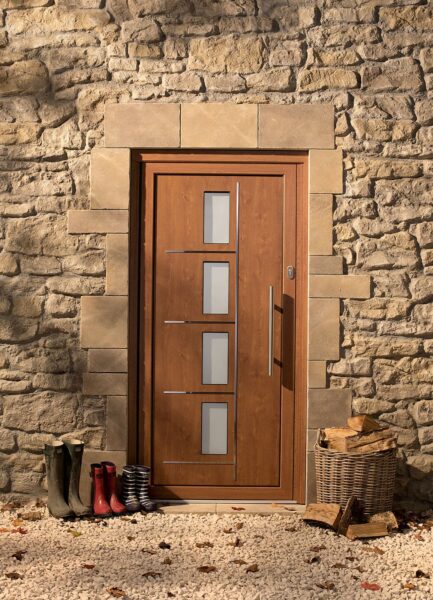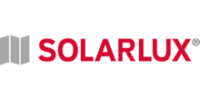An aluminium front door provides a slim, sleek, modern luxury look to your property. It also offers excellent security, a strong presence, excellent weather protection and improved energy efficiency. This article explains what to consider when choosing an aluminium front door.
It is easy to get confused with your options when looking at all the various brands sales messages, so this article aims to simplify the process. Here is what you don’t need to worry about when buying an aluminium front door.

Why do you need a new front door?
When purchasing a new front door, you may often fall into three main categories:
- Making a distress purchase. This is an essential purchase due to a failing front door.
- You are seeking a transformational upgrade. This is where you want change your front door to refresh your home or as part of your overall project.
- Those trying to find the right balance between price and premium. This is where you see doors in such a massive price range that it’s hard to decipher what you get for your money.
Each need requires a different approach, yet all share a common goal. You are looking for a new front door offering reliability, style, and long-term value. Understanding the options available in today’s front door market can help you make a more informed decision, ensuring you choose a door that fits both your immediate needs and future expectations.
The panels used in aluminium front doors
Most aluminium front doors you’ll come across use a decorative aluminium panel. Whilst these panels are generally very good quality and come from expert door panel manufacturers, they don’t fall under the same standards you get with glass, doors and windows.
Glass comes with set safety standards. For instance, CE Marking and Declaration of Performance. BS EN 12150-1 is another standard around glass tolerances, flatness, fragmentation and the actual glass thermal characteristics. Then you have BS EN 1279 and this standard is about units passings tests for moisture penetration. Of course, many people already recognise a Kitemark as a symbol of quality. Glass units have this too.
Panels broadly speaking do not have anything near the standards expected of glass. A basic aluminium door panel comprises 0.6mm or thicker aluminium sheet, powder-coated to the desired colour. These aluminium skins bond onto different inner cores. Some of these are basic polystyrene, others have a combination of polystyrene or timber. Some even have steel within the core.
What does this mean when choosing a new front door? In simple terms, the more expensive front door is one using a fully integrated door panel giving the appearance of a flush door. This doesn’t mean the glaze-in panel method is bad. Far from it and these doors are some of the best and most popular on the market.
As the image below shows, a quality aluminium front door looks flush, seamless and without the glazing line of one where an aluminium panel replaces the glass. The one with the seamless panel is the better-made door, but this doesn’t mean the glaze-in versions are substandard.


Aluminium front doors with glass panels
There are lots of marketing messages around how good the insulation of the glass is in the door panel. And mostly this is correct. Most aluminium door panels come with double or triple glazed units. Furthermore, all of these use toughened or laminated glass.
However, it’s worth looking deeper at the performance of the glass. If you’re looking at an excellent front door like Spitfire S200 or S500, the glass in these, even at 28mm or 40mm thick. Other brands like Glasswin front doors choose to put quadruple glazing as standard. Glass doesn’t give you anywhere near the low U-Values of an aluminium panel. But if you choose a better performance glass unit, the overall door performance improves as a result.
Are aluminium front doors secure?
As you do your research around new front doors you’ll come across all sorts of high security messages. Secured by Design, Document Q, RC2, PAS24 and others. It’s easy to see a security rating or badge and presume your door is security tested.
The good news is, most good brands of front doors have a security rating. What you may not know is what configuration and specification of that same brand of door passed the test.
The door systems companies submit for testing is usually a particular door type and with specific glass, hardware and perhaps security enhancements you don’t get as standard with your door. Laminated glass is almost always used in doors submitted for testing, so check out whether your door comes with this.
Hörmann is another fine brand of front doors. One of many doors by Hörmann with a Secured by Design (SBD) rating is their ThermoPro Steel Entrance Single Leaf Doorset Range. But study the product submitted for testing and it’s a half or part glazed door, opening inwards, without a letterbox.
As another example, the Spitfire S500 also has the required security certification, RC3. This is for a door with a triple glazed laminated glass unit, fitted with Schuco hinges, a Schuco low threshold, Siegenia LFU Lock, Winkhaus three-star cylinder and Riechmann Handle. The model tested is a single door at 900x2100mm high.
The crucial information here is your door must be the same as the model submitted for testing. So if you’re choosing a door having perhaps an automatic lock or toughened glass. Maybe you require a different handle, or your door has a sidelight and is wider and taller than standard. Your chosen product may not have the specification of the model that passed the security tests.
Does this mean you get a more secure door or you should worry? No. However, it’s worth knowing when choosing your new front doors. Often you need to ask for the high security upgrade – don’t assume it comes as standard. The same applies to those doors offering automatic, keypad, finger-print and other locking options. Many front doors aren’t security tested with a letterbox. Check these doors have security certification with any optional extra hardware.
The good news is, a quality product comes with several high security lock types, whether operated by a key, mechanically, automatically or a handle. The door cylinder is also a crucial part of the lock experience and should be a highly rated type. Check for anti-picking, drilling and bumping specifications.
The door hinges additionally play a part in the door security. Look for robust hinge designs, hinge pins and ask for an explanation of the components that make up the door set.
Understanding U-Values on an aluminium front door
U-Values on doors and windows are widely marketed. The lower the U-Value the better the performance of the door. Aluminium panels actually provide excellent U-Values as a stand-alone product. In fact, many panels provide better insulation than glass. But don’t just take the performance of the panel as an indicator.
When reading U-Values for your new front door, it’s the entire doorset that matters, not the panel material on its own.
Other factors giving you good U-Values is the glass thickness and type. The aluminium profiles have a thermal break and this plays a part too. It’s also important to consider the overall thickness of the door leaf, glass and panels. A quality aluminium door will come with a panel well over the 28mm provided by the glaze-in types. The door leaf should also be more than 40mm thick on a good door brand, again helping achieve low U-Values.

Six top tips for buying aluminium front doors
There are many different types of aluminium front doors, here is are top advice when researching:
- These are just some of the initial visual clues to a quality product: study the paint quality, look at the door joints, and feel the quality of the door hardware.
- Check out how the glass meets up with the aluminium panel. Are the joints neat and seamless? The overall assembly of the door and how it feels is another great visual indicator of quality. Yes, aluminium is light and strong, however, a good front door won’t feel light and flimsy when closing. It should close with a reassuring thunk, feel solid and robust.
- Check out the hinges. The best are highly engineered with security pins, even hidden into the frame, and branded with Reynaers, Schuco, Yale, Winkaus, or other trusted brands
- If a door brand offers quadruple glazing and high quality hardware, this should reassure you as to the quality and reliability of the product.
- Ask about the guarantee coming with the product and what exactly it covers. Some doors come with only a five-year warranty on the glass despite being marketed with a 10 or 20-year warranty.
- Finally for the paint finish. A good quality door will come with a paint finish professionally applied by a certified and quality assured powder coating company. Many products come with a thicker marine-grade coating.
How much are aluminium front doors?
A basic PVCu door is the cheapest type of new front door on the market. These are then followed by composite doors such as Door-Stop, Solidor, Truedor, and other brands. These typically start at about £1000-1200 supplied and fitted. Timber doors usually start at about £2500 upwards depending on the material, hardware and other options.
Aluminium doors start at around £1500-£1800 for a good mid-range model rising upwards for the premium brands. Companies like Urban Front charge several thousand for their bespoke versions.
The UK market doesn’t know about aluminium front doors as much as the composite version. Whilst the aluminium door will cost more, they’ll last longer and are more of an investment. It’s interesting that composite doors are very much a UK product – it’s hard to find these doors in other markets where aluminium or steel remains the go-to materials when buying a new front door.
Above all, you get what you pay for. You need only to look at some of the faded front doors in new build homes to see a cheap product and how it looks after only a few years of use. Aluminium doors need minimal maintenance and a routine clean with a mild soapy solution to keep them looking new and fresh. Take a look at our article about the best aluminium front doors.
If you need any extra advice, please get in touch with us.










